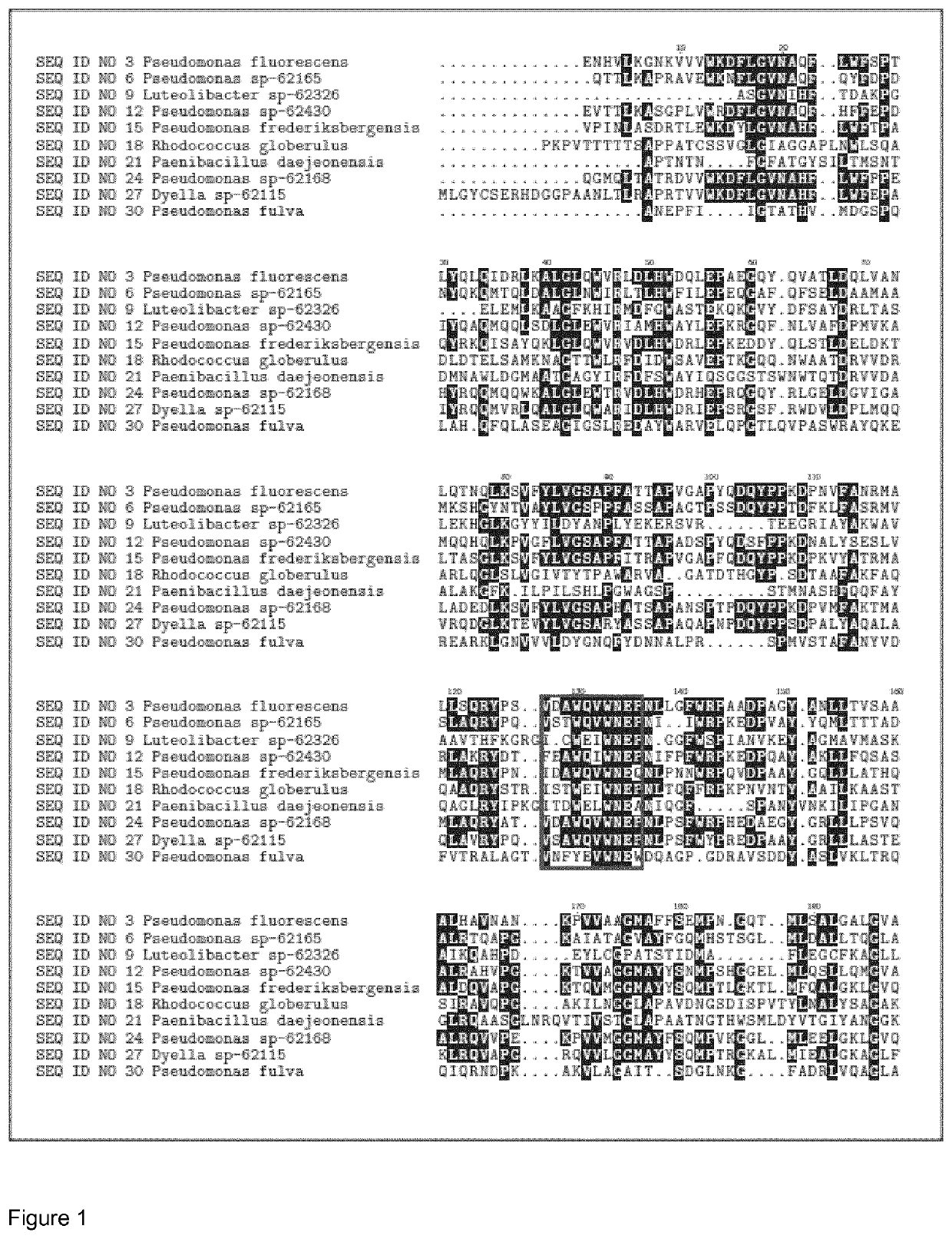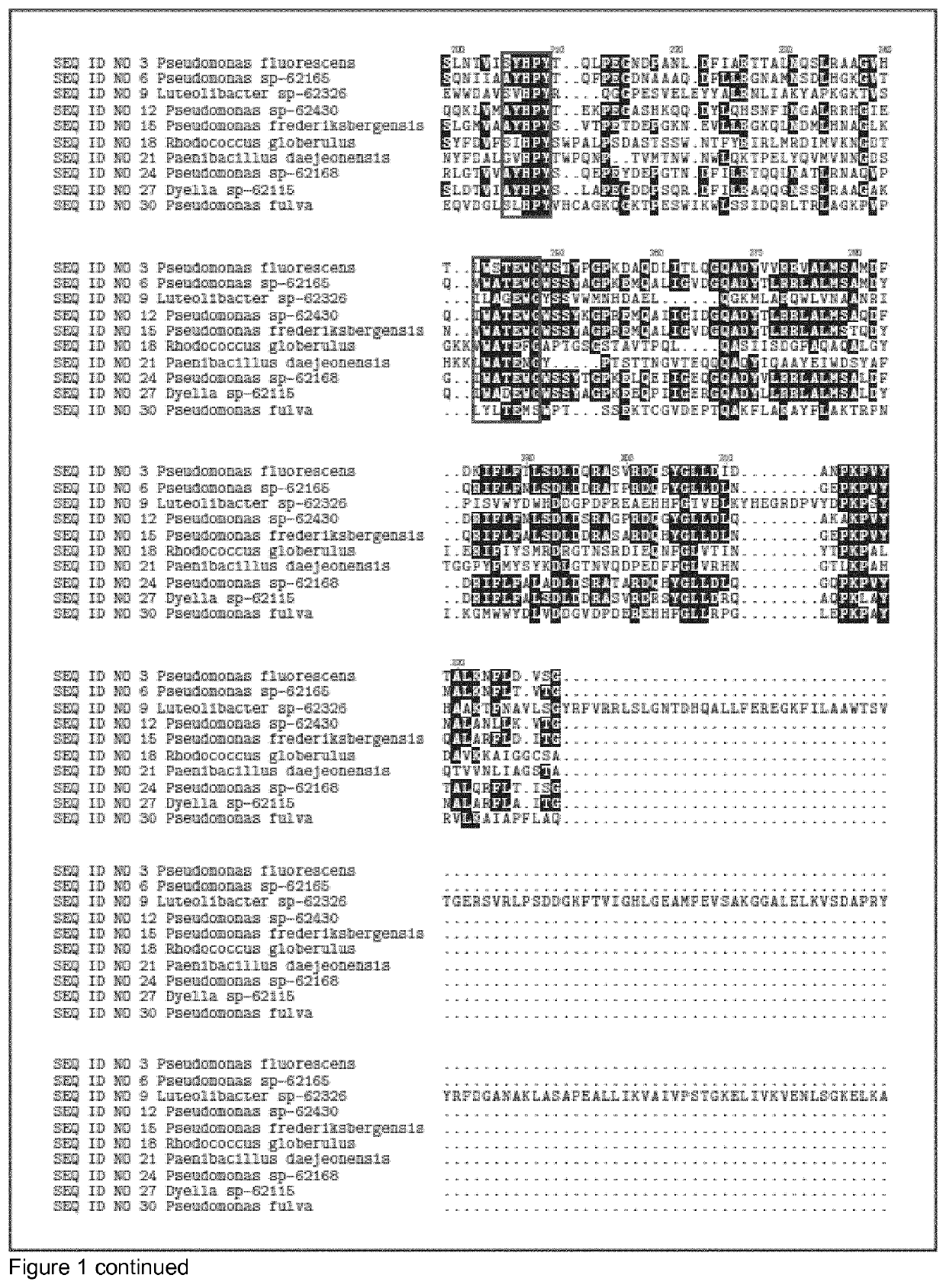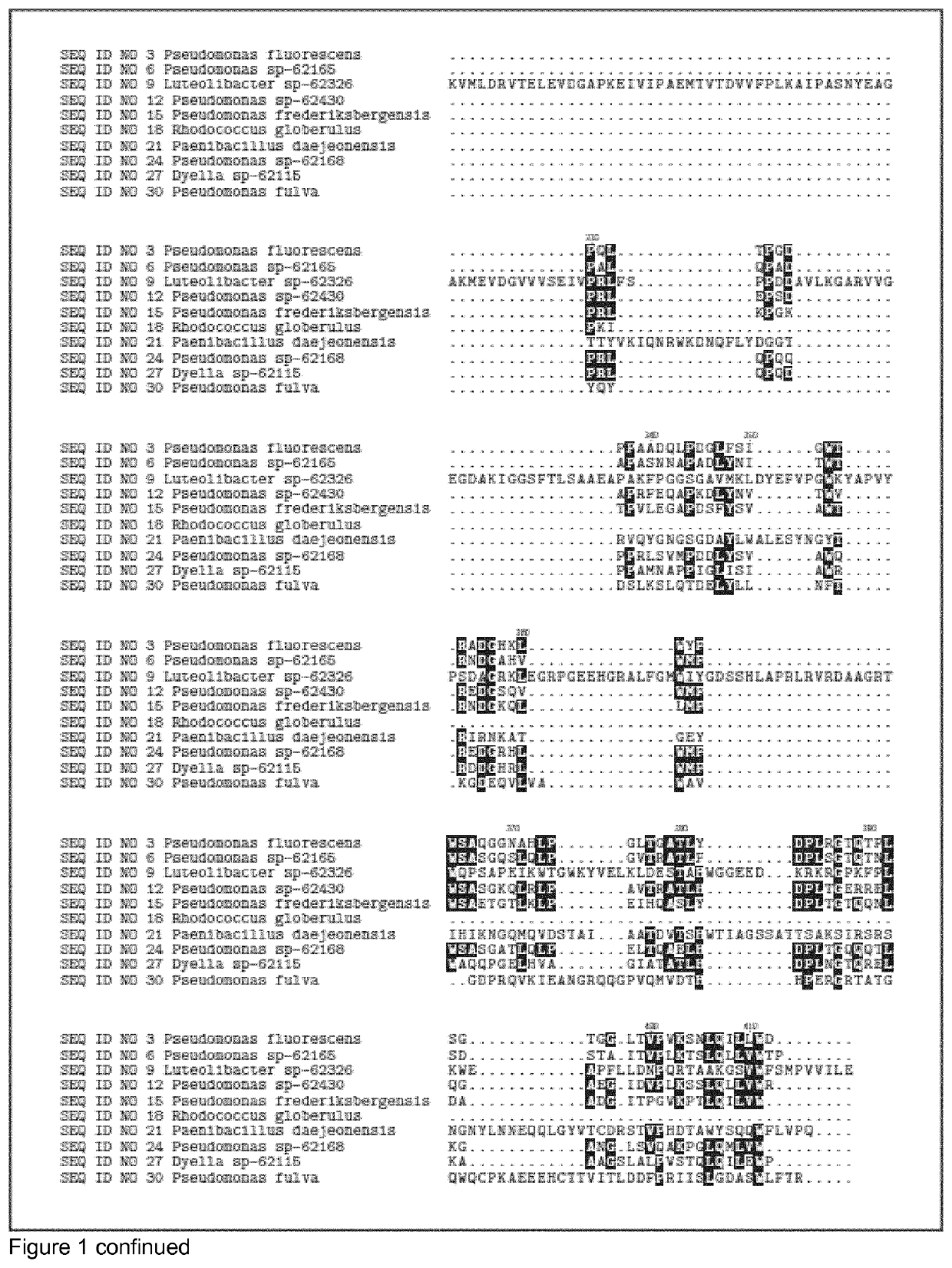Polypeptides
a polypeptide and polypeptide technology, applied in the field of polypeptides, can solve the problems of textile greasiness, malodor trapped in the organic structure, and the inability to achieve organic matter such as biofilm in textiles and surfaces, so as to improve the wash performance, and increase the wash performance
- Summary
- Abstract
- Description
- Claims
- Application Information
AI Technical Summary
Benefits of technology
Problems solved by technology
Method used
Image
Examples
example 1
Cloning and Expression of Polypeptides of the Invention
[0556]The DNA encoding the gene of SEQ ID NO 1, SEQ ID NO 4, SEQ ID NO 7, SEQ ID NO 10, SEQ ID NO 13, SEQ ID NO 16, SEQ ID NO 19, SEQ ID NO 22, SEQ ID NO 25, SEQ ID NO 28, SEQ ID NO 31, SEQ ID NO 34 were isolated from bacterial strains isolated from soil samples collected in different countries (see table 1). Chromosomal DNA from the different strains was subjected to full genome sequencing using Illumine technology. The genome sequence was analyzed for protein sequences that that had glycosyl hydrolase domains (according to the CAZY definition). 11 GH39 glycosyl hydrolase genes and corresponding sequence were identified in the genomes.
TABLE 1Maturecountryproteindonorof originSEQ ID NO 3Pseudomonas fluorescensIcelandSEQ ID NO 6Pseudomonas sp-62165DenmarkSEQ ID NO 9Luteolibacter sp-62326DenmarkSEQ ID NO 12Pseudomonas sp-62430United StatesSEQ ID NO 15Pseudomonas frederiksbergensisSwedenSEQ ID NO 18Rhodococcus globerulusDenmarkSEQ ...
example 2
nd Expression of Polypeptides of the Invention
[0557]The DNA encoding the mature peptide of GH39 genes SEQ ID NO 1, SEQ ID NO 4, SEQ ID NO 7, SEQ ID NO 10, SEQ ID NO 13, SEQ ID NO 16, SEQ ID NO 19, SEQ ID NO 22, SEQ ID NO 25, SEQ ID NO 28, SEQ ID NO 31, SEQ ID NO 34 were amplified from the genomic DNA of the corresponding bacterial strains by standard PCR techniques using specific primers containing an overhang to cloning vector. The amplified PCR fragments were inserted into a Bacillus expression vector as described in WO 12 / 025577. Briefly, the DNA encoding the mature peptide of the gene was cloned in frame to a Bacillus clausii secretion signal (BcSP; with the following amino acid sequence: MKKPLGKIVASTALLISVAFSSSIASA (SEQ ID NO: 41 (former SEQ ID NO 38)). BcSP replaced the native secretion signal in the gene. Downstream of the BcSP sequence, an affinity tag sequence was introduced to ease the purification process (His-tag; with the following amino acid sequence: HHHHHHPR (SEQ ID ...
example 3
urification Method
[0558]The His-tagged GH39 enzymes were purified by immobilized metal chromatography (IMAC) using Ni2+ as the metal ion on 5 mL HisTrap Excel columns (GE Healthcare Life Sciences). The purification took place at pH 7 and the bound protein was eluted with imidazole. The purity of the purified enzymes was checked by SDS-PAGE and the concentration of the enzyme determined by Absorbance 280 nm after a buffer exchange in 50 mM HEPES, 100 mM NaCl pH7.0
PUM
| Property | Measurement | Unit |
|---|---|---|
| organic structure | aaaaa | aaaaa |
| length | aaaaa | aaaaa |
| enzyme activities | aaaaa | aaaaa |
Abstract
Description
Claims
Application Information
 Login to View More
Login to View More - R&D
- Intellectual Property
- Life Sciences
- Materials
- Tech Scout
- Unparalleled Data Quality
- Higher Quality Content
- 60% Fewer Hallucinations
Browse by: Latest US Patents, China's latest patents, Technical Efficacy Thesaurus, Application Domain, Technology Topic, Popular Technical Reports.
© 2025 PatSnap. All rights reserved.Legal|Privacy policy|Modern Slavery Act Transparency Statement|Sitemap|About US| Contact US: help@patsnap.com



